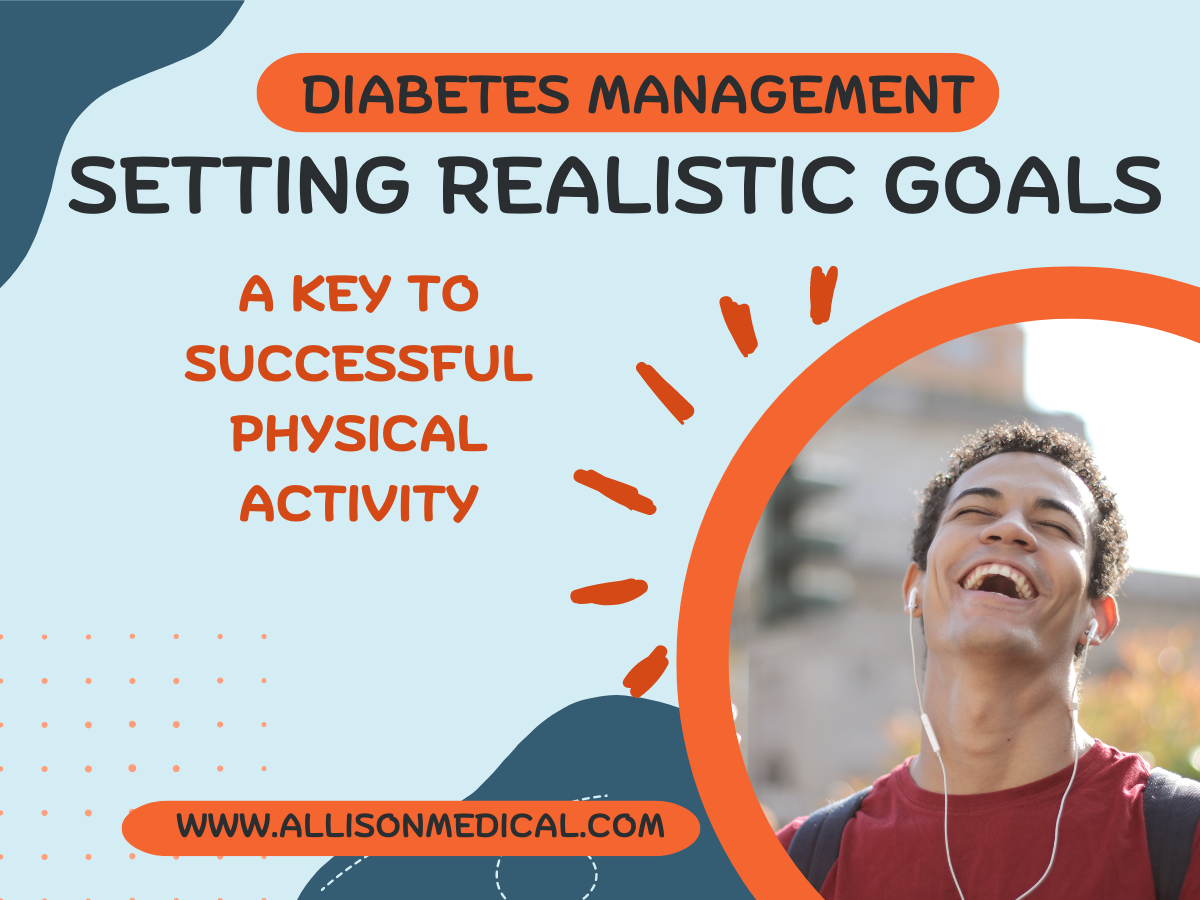Be sure to talk to your healthcare professional before making any treatment changes.
Introduction:
Setting realistic goals is a fundamental aspect of effective diabetes management, especially concerning physical activity. For individuals living with diabetes, establishing achievable exercise targets can significantly contribute to improved health outcomes and overall well-being. In this blog, we’ll explore the importance of setting realistic goals with physical activity for people with diabetes and provide insights into how this approach can lead to sustainable lifestyle changes.
The Importance of Realistic Goals:
1. Gradual Progression:
Setting realistic goals allows individuals to progress gradually in their fitness journey. This approach prevents burnout and reduces the risk of injury, especially for those who are new to exercise or have been inactive for a while. Incremental improvements over time lead to sustainable lifestyle changes.
2. Increased Motivation:
Realistic goals provide individuals with a sense of achievement as they make progress towards their objectives. Achieving small milestones boosts motivation and encourages individuals to continue with their exercise routine. This positive reinforcement contributes to long-term adherence to physical activity.
3. Maintaining Consistency:
Realistic goals are easier to integrate into daily life, making it more likely for individuals to maintain consistency with their exercise regimen. When goals are achievable and aligned with personal capabilities and circumstances, individuals are more inclined to stick with their routine over the long term.
4. Preventing Discouragement:
Unrealistic goals can lead to feelings of frustration and discouragement when they are not met. In contrast, setting realistic goals ensures that individuals experience success along the way, even if progress is gradual. This helps maintain a positive mindset and prevents setbacks in the journey towards better health.
Strategies for Setting Realistic Goals:
1. Assess Current Fitness Level:
Before setting goals, it’s essential to assess one’s current fitness level and consider any limitations or health concerns. Understanding where you are starting from provides a basis for setting realistic and achievable targets.
2. Break Down Larger Goals:
Divide larger goals into smaller, more manageable tasks or milestones. This approach makes the overall goal less daunting and allows individuals to track their progress more effectively.
3. Set Specific, Measurable, Attainable, Relevant, and Time-bound (SMART) Goals:
Utilize the SMART criteria when setting goals to ensure they are specific, measurable, attainable, relevant, and time-bound. For example, instead of setting a vague goal like “exercise more,” a SMART goal could be “walk for 30 minutes five days a week for the next month.”
4. Listen to Your Body:
Pay attention to how your body responds to exercise and adjust your goals accordingly. It’s important to strike a balance between pushing yourself to improve and avoiding overexertion or injury.
Conclusion:
Setting realistic goals is paramount for individuals with diabetes embarking on a journey to incorporate physical activity into their lifestyle. Realistic goals promote gradual progression, increase motivation, maintain consistency, and prevent discouragement. By setting achievable targets aligned with personal capabilities, individuals can experience success in their fitness journey and improve their overall health and well-being.
Remember, it’s essential to consult with a healthcare provider or a certified exercise professional when designing an exercise program, especially for individuals with pre-existing health conditions.
Sources:
1. American Diabetes Association. Exercise. [Link](https://www.diabetes.org/fitness)
2. National Institute of Diabetes and Digestive and Kidney Diseases (NIDDK). Physical Activity and Diabetes. [Link](https://www.niddk.nih.gov/health-information/diabetes/overview/diet-eating-physical-activity/physical-activity)
For More:









